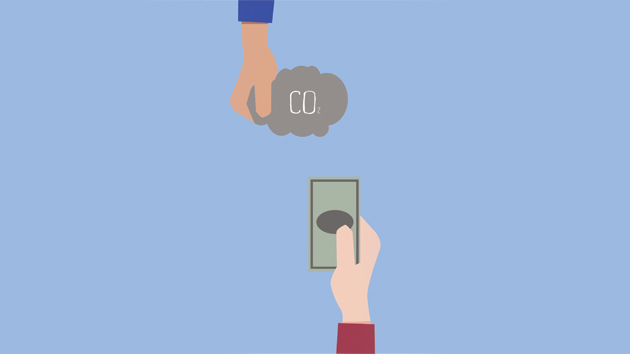Climate change today is a dire situation. The United Nations’ Intergovernmental Panel on Climate Change (IPCC), the most well-trusted source on the issue, has established that human-caused global warming must remain under 2 degrees Celsius (3.6 degrees Fahrenheit) to avoid the worst of likely irreversible impacts on society. The reductions in global greenhouse gas emissions necessary to stay within the 2 degree limit have been made or even promised by the world’s major emitters. Even as climate change increasingly manifests in unfortunate disasters, like the recent string of hurricanes in Latin America and the Southern U.S., few take the crisis at hand seriously.
However, there is reason for hope. The climate change movement is stronger than ever, with more passionate advocates harnessing more resources than ever before. There are also simple creative solutions for the movement to back. One such effective solution is a price on carbon.
Carbon pricing creates a financial motive to switch to renewable energy and other emission-saving practices. It harnesses the economic institutions already in place, and radically changes the (mis)perception that fossil fuels are cheap and extremely profitable by charging for the pollution they create. Even better, a carbon pricing policy could address the country’s growing gap between the haves and the have-nots. For instance, the Carbon Fee and Dividend policy would distribute the revenues from a national carbon fee to all citizens equally, putting more money in the pockets of the poorest households.
The urgency of climate change necessitates solutions that can easily generate majority support, the primary force in a democracy. Respected members of both Democratic and Republican parties have voiced their support as well as major corporations like Exxon Mobil. Evidently, even businesses heavily entrenched in the fossil fuel economy understand the benefit of having a predictable, steadily-increasing price on carbon; such a policy can promote economic growth while addressing the greatest crisis of our time.
The potential widespread appeal and economic power of a price on carbon brought me to the #PutAPriceOnIt campaign, a collaboration between National Geographic’s television series “Years of Living Dangerously” and the Oregon-based nonprofit Our Climate. The campaign connects and empowers students and young adults to advocate for carbon pricing at the state and federal levels. Since it began last year, #PutAPriceOnIt has successfully garnered the endorsement of over 30 college and university presidents. These endorsements send the message to our representatives in Congress that they should seriously consider carbon pricing legislation.
An endorsement from St. Lawrence is a no-brainer, considering our school’s commitment to sustainability and recognition of the threat of climate change. Join me and other students as we call upon President Fox to sign a letter in support of carbon pricing and #PutAPriceOnIt. Join CantonCCL on Facebook and SLUwire to learn how you can get involved in our efforts.
By Hogan Dwyer.



